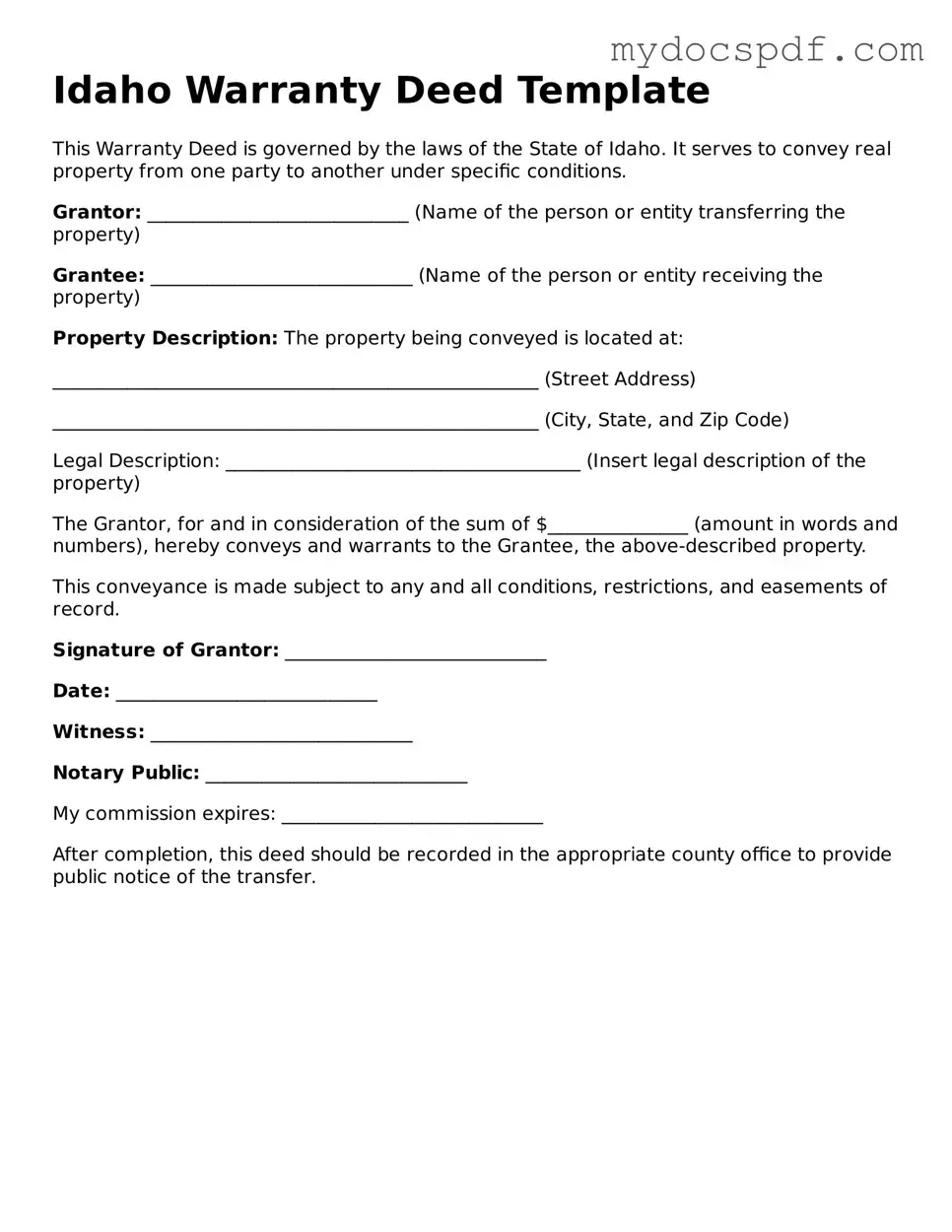Idaho Warranty Deed Template
This Warranty Deed is governed by the laws of the State of Idaho. It serves to convey real property from one party to another under specific conditions.
Grantor: ____________________________ (Name of the person or entity transferring the property)
Grantee: ____________________________ (Name of the person or entity receiving the property)
Property Description: The property being conveyed is located at:
____________________________________________________ (Street Address)
____________________________________________________ (City, State, and Zip Code)
Legal Description: ______________________________________ (Insert legal description of the property)
The Grantor, for and in consideration of the sum of $_______________ (amount in words and numbers), hereby conveys and warrants to the Grantee, the above-described property.
This conveyance is made subject to any and all conditions, restrictions, and easements of record.
Signature of Grantor: ____________________________
Date: ____________________________
Witness: ____________________________
Notary Public: ____________________________
My commission expires: ____________________________
After completion, this deed should be recorded in the appropriate county office to provide public notice of the transfer.
